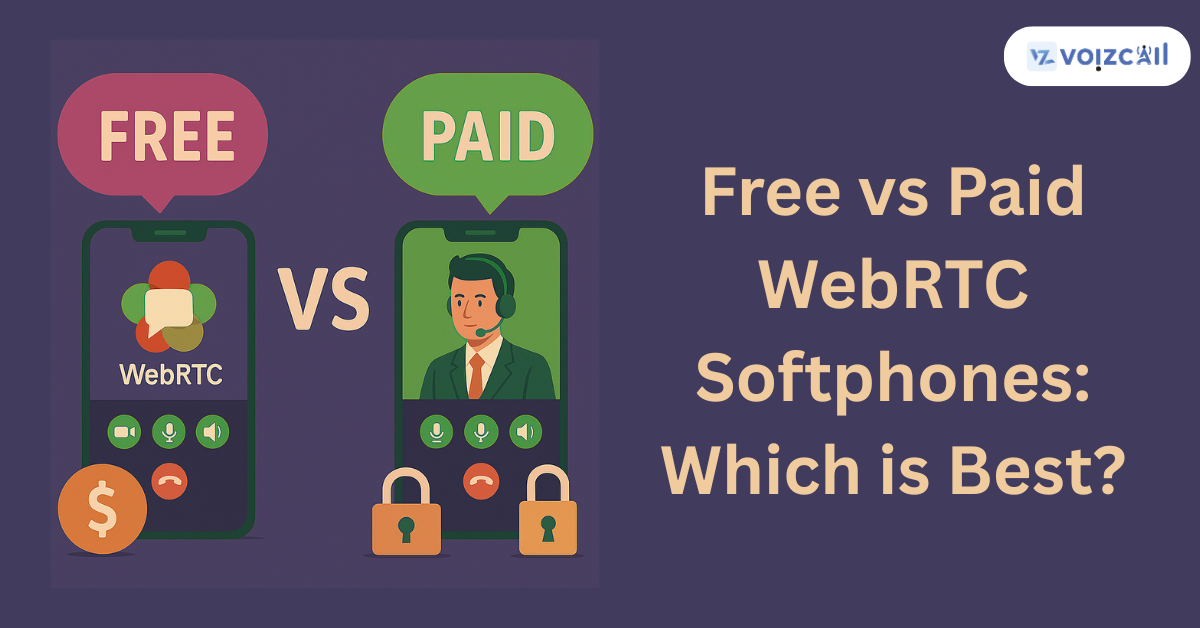


19/May/2025
Selecting the best tool to communicate within the team is crucial for businesses or virtual teams. A new solution called WebRTC softphone is being used. It lets you call other phone numbers over the internet from your browser. However, there’s still an issue: Some ask if they should pay for VoIP or use the free ones.
Here, we will examine both the free and paid options for WebRTC phone apps to find out which is better for you.
1. If I Save Money with Free, What Am I Sacrificing?
Out of paid and free VoIP apps, choosing the free ones is an easy option. Developers and tech-savvy users can enjoy Jitsi and Linphone, as these open-source softphones are free and excellent for them.
Nevertheless, free tools may lack full assistance, only have essential features and may be incompatible with some software. Strong encryption, frequent updates and top-notch audio are what define paid business messengers, making them appropriately suited for businesses.
2. Security: Are Open-Source Encryption Methods Rivals to Premium?
The level of security is a decisive factor when wondering whether to use WebRTC softphone open source or premium. If you are using the free version, there is no guarantee that your data will be securely encrypted and protected from hackers.
Often, paid applications for WebRTC come with security features like encrypted sessions, two-factor protection and require following HIPAA or GDPR standards.
3. What Do You Really Require From the Smartphone?
Typically, these phone apps allow you to make audio and video calls, but not much else for free. You must pay for a subscription to enjoy features such as recording calls, sharing your screen, connecting CRMs or using analytics.
If you oversee a call center or support center, the extra features can greatly improve productivity and the results you see.
4. Support and Maintenance: Hands-Off vs DIY
With an open source vs premium WebRTC softphone implementation, the largest disparity is customer support. Free tools utilize community forums or GitHub sites, which can slow down issue resolution.
Conversely, paid vendors provide 24/7 customer support, onboarding assistance, and bug fixes. This minimizes downtime and facilitates scalability.
5. Scalability: Are You Ready to Grow?
When you begin small, a free WebRTC phone application solution could do the trick. However, once your business expands, you will hit the wall—max number of participants for calls or absence of cloud infrastructure.
Call / Email for Sales Inquiry Today
Premium solutions scale. They let you grow with additional users, improved bandwidth management, and enterprise-level integrations.
Last Thoughts: Paid vs Free VoIP Apps — What's Best?
Your choice depends on your particular use case. As a hobbyist or small business, a WebRTC phone app free is an excellent place to begin. However, for bigger teams or mission-critical business processes, paying for a high-end solution guarantees reliability, support, and security.
Compare paid versus free VoIP apps in terms of the long game. Downtime, bad call quality, or security compromises can be more expensive than the initial cost of a free option.